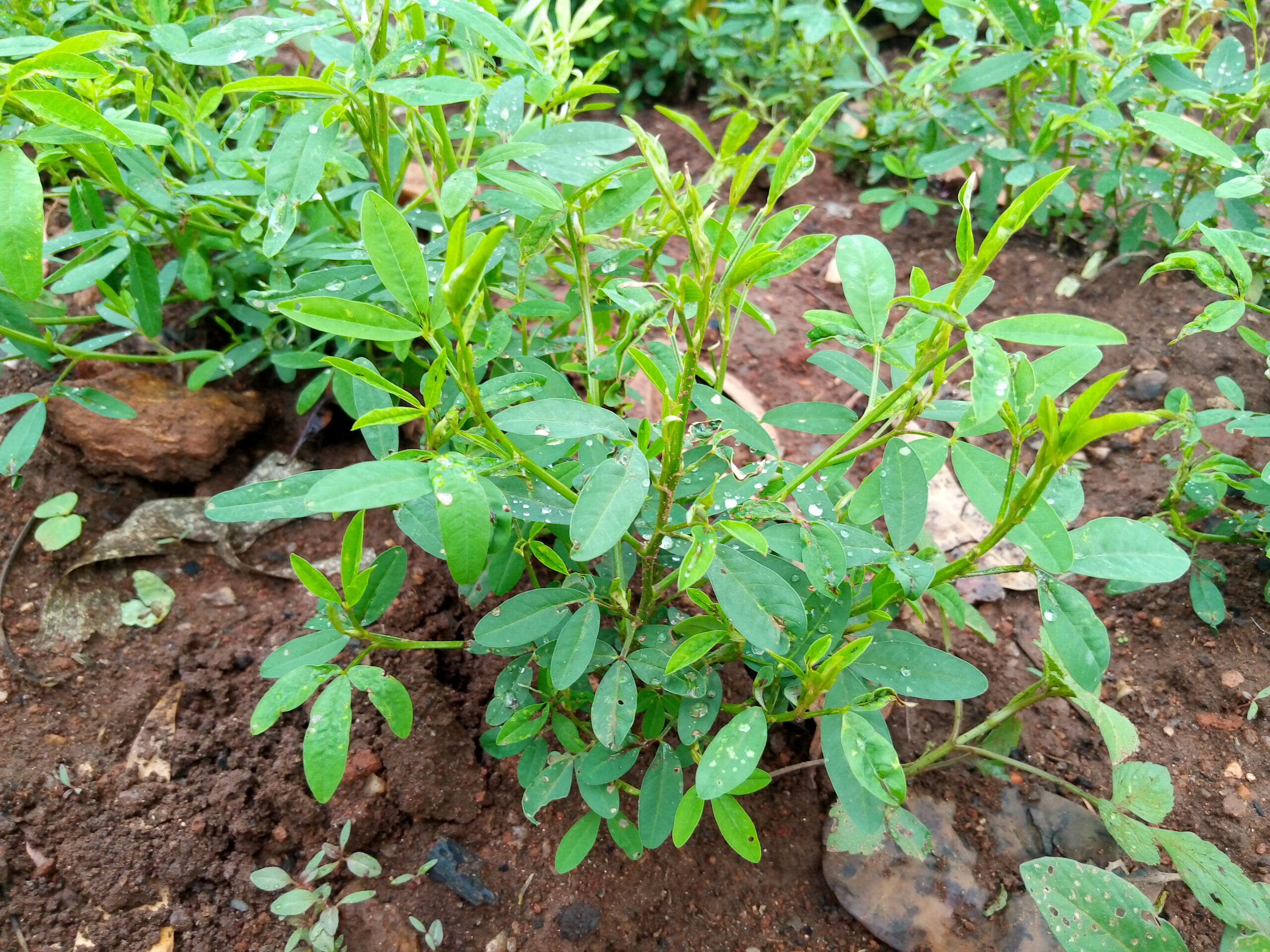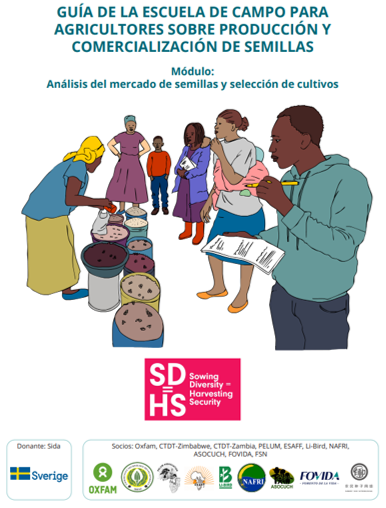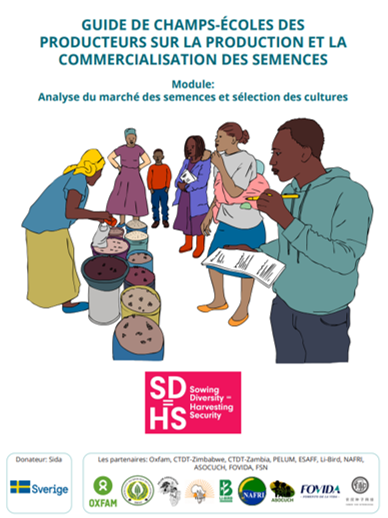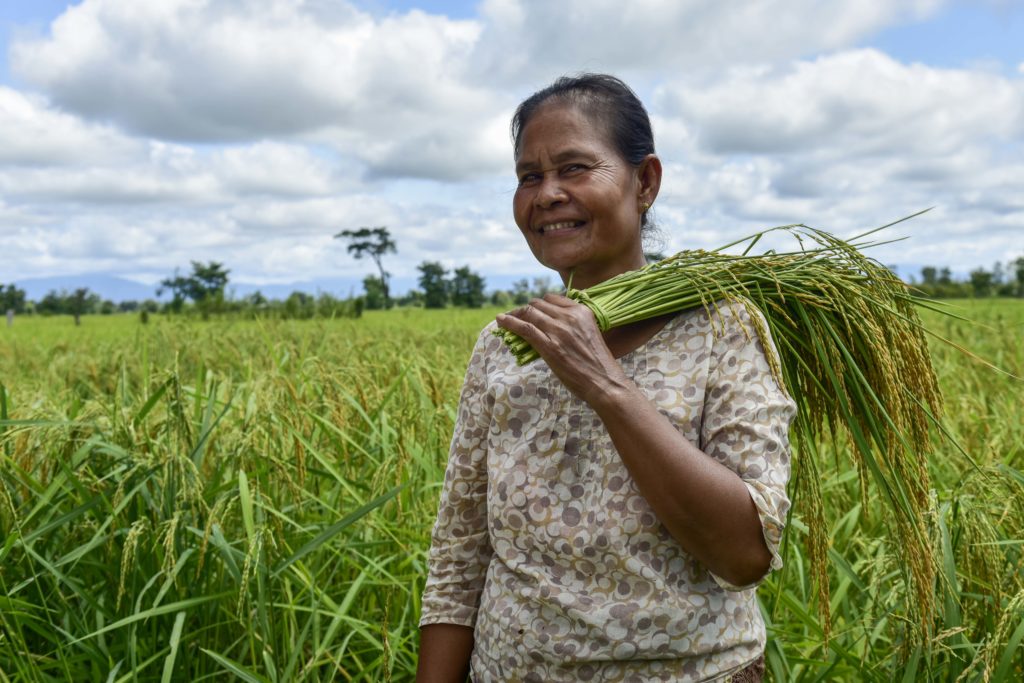Joshua Enyetu
In Uganda, as in other parts of the world, SD=HS supports smallholder farmers to improve management of local food plants to ensure their food and nutrition security. The motors of these efforts are Farmer Field Schools (FSS). This story shows how the members of a FFS in the northern part of the country are promoting a neglected and underutilized species (NUS).
“What the builder had rejected has become the cornerstone of a building”. This is a description that fits crotalaria very well. Known as alwaro in northern Uganda, this is a local food plant widely recognized as a NUS. The edible parts of this plant are the leaves and flowers. The locals say it is a medicinal plant, and many remember a myth saying that sorcerers used the plant to gain strength. Alwaro used to be widely known and eaten, however, nowadays its consumption is limited. Some say that newly introduced foreign crops have greatly contributed to the disappearance of alwaro. Others say that it is its bitter taste that led many people in the community to abandon it. They also explain that they do not know much about cooking methods and blending options for alwaro.
Organizing an experiment to improve the taste of alwaro
At the Pi Yot Kom Farmer Field School, in the west Nile region, some 470 km north of Kampala, a group of 20 women and 5 men is working together to promote the use of local food plants and improve diets. One of the objectives they came up with during the past few months was to try to improve the taste of alwaro, and in this way encourage more families to consider it as part of their diets. The members of the Pi Yot Kom FFS, like most other villagers, strongly believe that the plant is highly nutritious, but also think that its taste needs to be improved to increase its consumption among different age groups. The group decided to run a series of experiments, trying 10 different ways to cook alwaro and to prepare a sauce with it, to determine which of these cooks faster and gives a better taste.
As part of the regular activities in the FFS curriculum, farmers start with a general diagnose, looking at the problems related to the access, cultivation and use of local food plants. The results of the diagnostic stage are presented as research objectives. The FFS then carries out different activities to meet these research objectives, comparing alternatives and discussing the best way to solve the problems identified. Cooking demonstrations are frequently carried out to show how to increase the palatability of the plants, with members sharing several recipes based on local food plants.
This activity is carried out in all those cases where FFS members wish to increase the acceptability and consumption of local food plants. Most farmers find this activity interesting because it provides them with different cooking options, helping them increase the dietary diversity. The group members gathered 10 clay cooking pots and 10 saucepans, together with peanut paste, silver fish and other food plants such as eggplants (Solanum melongena), okra (Abelmoschus esculentus), groundnuts (Arachis hypogaea), cherry tomatoes (Solanum lycopersicum), mukene (silver cyprinid, Rastrineobola argentea) and jute plant (otigo, Corchorus olitorius L.) to be mixed with alwaro. Each pot and saucepan contained one of the different cooking alternatives proposed.
| Sauce pan 1 & Pot 1 | Alwaro + Otigo (Corchorus olitorius L.) |
| Sauce pan 2 & Pot 2 | Fried Alwaro |
| Sauce pan 3 & Pot 3 | Pasted Alwaro |
| Sauce pan 4 & Pot 4 | Plain boiled Alwaro |
| Sauce pan 5 & Pot 5 | Alwaro + Eggplants (Solanum melongena L.) + Awasi |
| Sauce pan 6 & Pot 6 | Pasted Alwaro + Otigo (Corchorus olitorius L.) |
| Sauce pan 7 & Pot 7 | Pasted Alwaro + Egg plants (Solanum melongena L.) |
| Sauce pan 8 & Pot 8 | Pasted Alwaro + Mukene |
| Sauce pan 9 & Pot 9 | Fried Alwaro + Mukene |
| Sauce pan 10 & Pot 10 | Boiled Alwaro + Mukene |
Tasting the foods
Three women and three men from the community, representing three different age categories (youth, middle-aged and elderly persons) were selected to taste the 10 recipe options. This enabled the characterization of taste preferences of the different food combinations, and tastes based on demographic groups.
Preparing alwaro with othigo has been the traditional way followed in this area. However, younger people have never found this combination very appealing. This is largely because of the bitter taste, and the sticky taste that is caused by othigo. The cooking demonstration showed that other options are possible, and that it is not difficult to think of different recipes. Generally, both men and women preferred the pasted alwaro, however women were more inclined to combine it with othigo. But after the cooking demonstration and the experiment, they all noticed that the combination of alwaro and eggplants cooks faster. They also pointed that, in terms of the ingredients needed, this is a cheaper alternative, making it more attractive.
The cooking exercise showed that alwaro takes about 15 to 25 minutes to prepare when cooked in a saucepan, and slightly more when cooked with clay pots (approximately 5 minutes more). The tasting exercise showed that when alwaro is cooked using the traditional clay pots, age groups and both men and women think that it tastes better. Considering the different combinations with other food plants, the taste of pasted alwaro combined with eggplant was clearly the favourite.
Next steps
The FFS members now plan to cultivate alwaro in the different individual home gardens and in larger plots for its commercialization. They think that domesticating this plant is easy since it requires less management practices and because it grows fast, being ready for consumption after a period of only 3 weeks. Alwaro increases the local food diversity and can be readily available in the food-scarcity months.
Following the results of the cooking demonstrations, community members see that there is a need to conduct laboratory tests to determine the nutritional and medicinal value of plants like alwaro. This will provide relevant information to the community and might encourage their consumption. Further, they think that that the project should join forces with chefs working in bigger hotels and restaurants, and set up cooking demonstrations, inviting them to share the recipes that include alwaro and other local food plants. This can help create a larger market for such local food plants. Additionally, it is important to properly document the best way to grow alwaro, focusing on the agronomic aspects, the best management practices, growth stages and associated plant needs.









